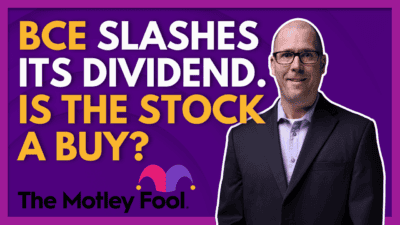Dividend investing in the oil patch can be fraught with risk. The capital-intensive nature of oil exploration and production can cause serious working capital shortages, with companies relying on debt to fund expenses and dividend payments. Some companies in the patch pay unsustainable monster dividend yields as a means of attracting and retaining investors in the hope that cash flow will grow sufficiently to fund both dividend payments and working capital.
However, as the recent experiences of Pengrowth Energy (TSX: PGF)(NYSE: PGH), Penn West Petroleum (TSX: PWT)(NYSE: PWE), and Lightstream Resources (TSX: LTS) demonstrate, a range of factors can derail planned development and prevent this from happening. As a result, all three companies found themselves overleveraged with declining cash flows and unsustainable dividends, earning the wrath of investors when they slashed dividends and capital expenditures in order to turn their businesses around. Investors need to pay close attention to the financial health of an oil company before investing solely for the sake of massive dividend yield.
Lets take a closer look at two big dividends from the patch investors can count on and one to avoid.
This company has a sustainable dividend and solid growth prospects
Integrated energy major Husky Energy (TSX: HSE) is fast shaping up as one of the most exciting growth plays in the patch. The company has a solid portfolio of projects under development and is poised to continue building on the success of the South China Sea Liwan gas project, boosting its capability to access lucrative Pacific Rim markets.
Husky pays a dividend with a healthy yield of 3.5%, and in an industry where cash is king and growing cash flow is an important component of funding the development of oil reserves in order to create sustainable production, Husky’s strong record of cash flow growth stands out.
For 2013, cash flow jumped a healthy 4% compared to 2012, and first-quarter 2014 results indicate that the company is on target to maintain its forecast compound annual growth rate for cash flow of 6% to 8%. This, along with a solid margin or netback of $44.81 per barrel of crude, bodes well for further cash flow growth.
When all of these factors are considered, it is clear that Husky’s dividend is sustainable and over time will continue to grow, along with the company’s cash flow and netback per barrel.
This oil sands operator continues to pay one of the highest dividends in the patch
Canadian Oil Sands (TSX: COS), the owner of the largest stake in the Syncrude project, continues to pay a dividend with a juicy yield touching 6% — almost triple the risk-free rate of 10-year Canadian government treasuries. However, it is the relatively low payout ratio of 81% that makes it stand out, and when coupled with a history of solid cash flow growth, highlights the that dividend is sustainable.
For the first quarter of 2014, cash flow popped a healthy 29% year over year. This strong growth should continue, with better fundamentals in the patch driving higher crude prices as well as solid production growth, increasing revenue. As a result, despite the cost and maintenance issues associated with the upgrader (the machinery turning bitumen into light sweet crude), these developments bode well for this solid yield to continue.
This intermediate oil producer’s turnaround strategy shows signs of success, but its dividend appears unsustainable
It was only in June 2013 that Penn West Petroleum reviewed its operations and implemented a turnaround strategy focused on repairing its balance sheet while retaining much-needed capital. This saw the company slash its dividend by almost 50%, reduce capital expenditure, and commence divesting itself of non-core assets. Even after slashing its dividend it still has a juicy yield of 5.8%, but a number of factors indicate that it still may be unsustainable.
Of some concern is that the company continues to report a net loss, while cash flow remains flat, creating a working capital deficit. At this time the deficit is being funded by the proceeds of asset sales, yet dividend payments are two times higher than Penn West’s operating cash flow after the deduction of the capital expenditures required to maintain oil production.
However, when divestments cease, Penn West will have to find alternate means of funding this deficit, with debt being the most likely candidate, unless it has been able to significantly grow cash flow. Considering that any significant cash flow growth is unlikely because of declining oil production and a relatively low margin or netback of $36.67 per barrel of crude produced, it is likely the dividend could be cut yet again.
These things continue to make the company unattractive for dividend investors despite signs of its turnaround strategy gaining traction.








